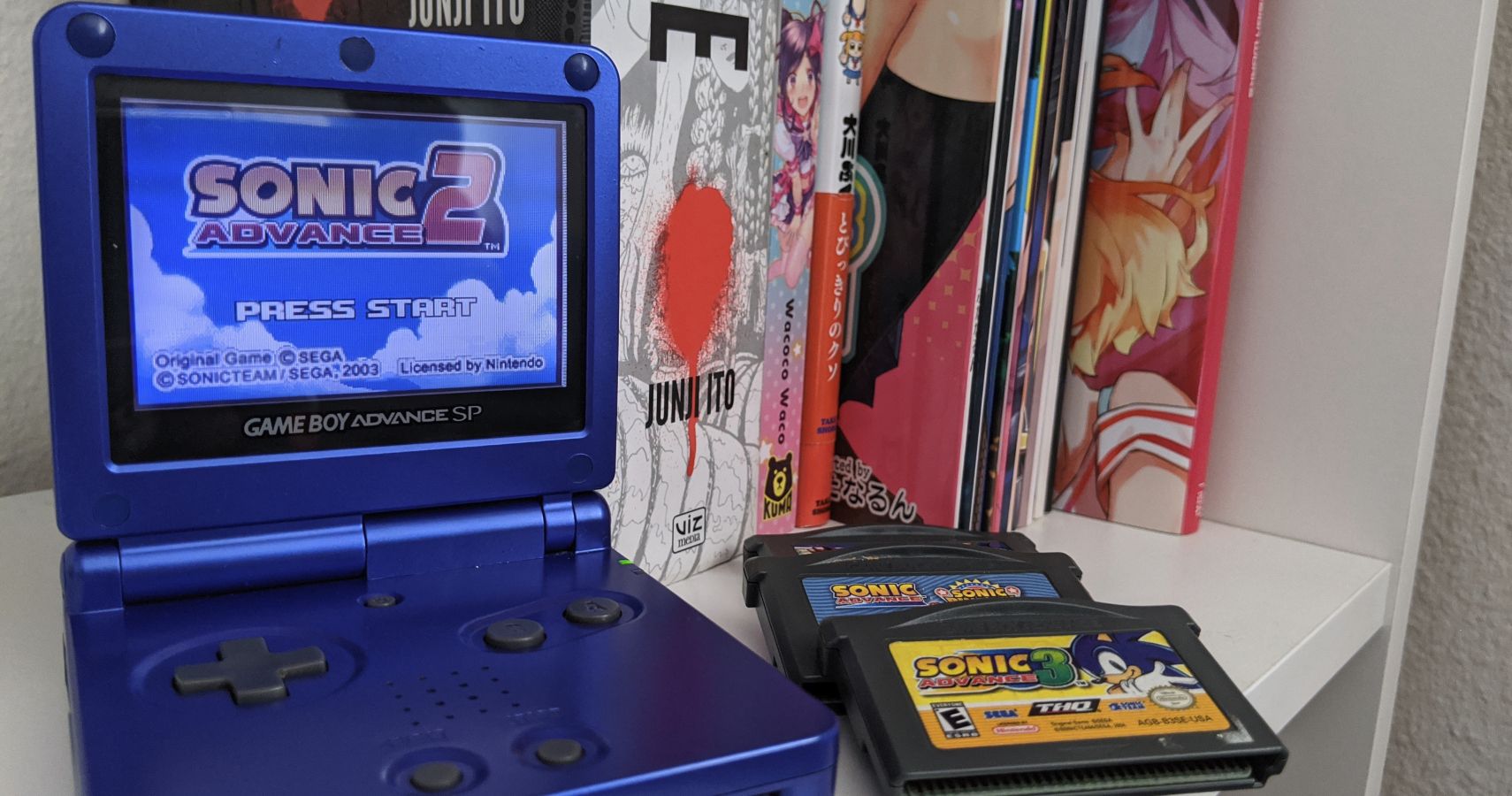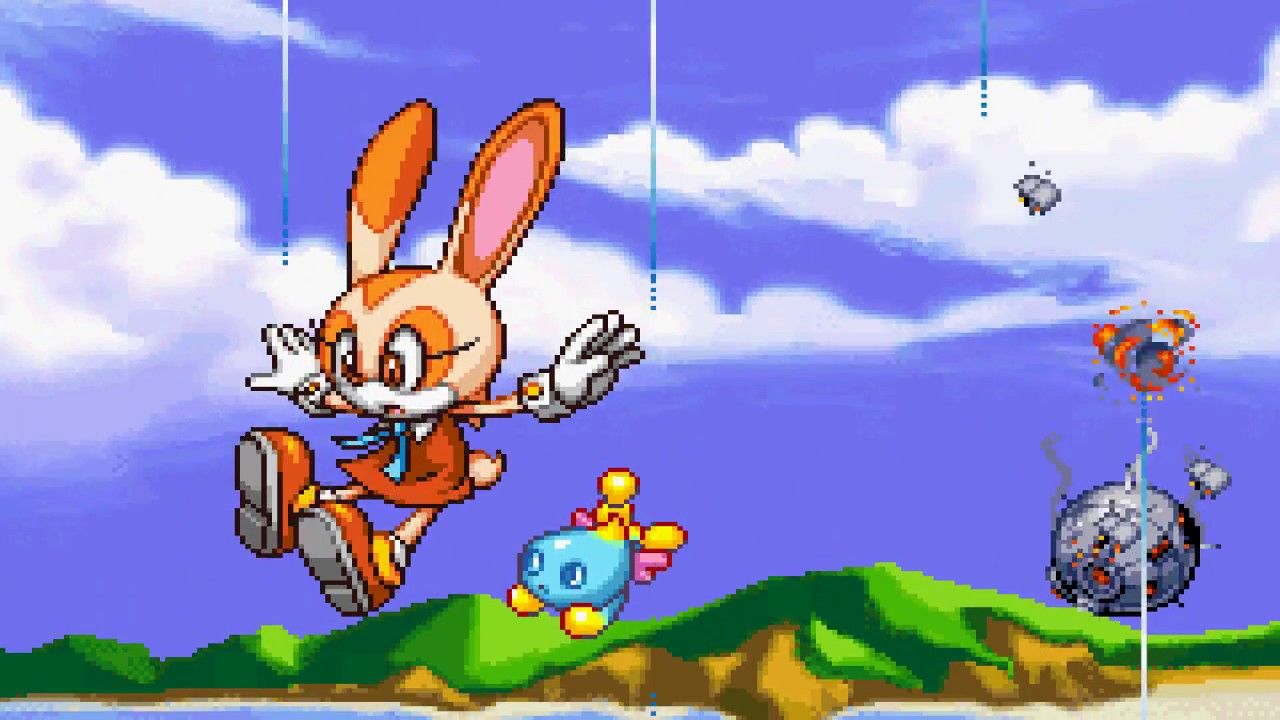Sonic was in a strange place in 2002. Sega's console ventures had come to an end, leaving their flagship mascot without a platform to market. The former heavyweight started to strike up deals with other publishers, with would-be exclusive blockbusters going to Nintendo and Microsoft for the very first time.
But without a console to advertise, what was the purpose of Sonic? How could that franchise thrive without the full weight of a publisher/developer thrown behind it? Unfortunately, Sega would stumble for some time figuring out the franchise's identity in a post-Dreamcast world, with divisive 3D entries not currying much critical favor at the time. In the eyes of many, Sonic was a rapidly stagnating relic of a bygone era.
Those eyes, however, clearly weren't paying attention to the Game Boy Advance. If they had been, they'd have seen the tireless efforts of devs trying their best to keep the Blue Blur alive. While Sonic Team figured their shit out with Sonic Heroes and Shadow the Hedgehog, Dimps stabilized the series' course with a quartet of stellar 2D entries.
Sonic Pocket Adventure - Heir To The 2D Throne
But first, let's backtrack two years. SNK was still in the console biz, and they'd just shipped the NeoGeo Pocket Color - an impressive competitor to Nintendo's stalwart Game Boy brand. To take on the Big N, SNK teamed up with Sega to make a showstopping Sonic game that would turn their rivals' heads. The result was Sonic Pocket Adventure, a fun kind-of remake of the Genesis original that garnered effusive critical praise at the time. If you were going to get a Pocket Color, this was the game to do it for.
As anyone in this biz knows, unfortunately, "effusive critical praise" often doesn't translate to tangible financial success. Even with a stellar title like Pocket Adventure in its pocket (heh,) there just wasn't enough traction behind the system to compete with the competition's omnipresence. So it was, then, that the NeoGeo Pocket Color died on impact - waging a meek two-year scrap against Nintendo before SNK folded in 2001. Unfortunately, that left devs who worked on Pocket Adventure with practical knowledge of how to successfully translate Sonic to handhelds, but with no place to do it.
Cue the Dreamcast's failure. Sega was faced with the grim reality that they'd have to exit the console wars, and scrambled to figure out how to navigate the perilous new world of third-party publishing. This meant freeing up the reigns to beloved properties like Sonic, and doing anything they could to keep their momentum going - lest they lose it all.
Luckily, they had some old friends to fall back on.
Sonic Advance - The Blue Blur's Nintendo Debut
From the ashes of SNK rose Dimps - a scrappy team of industry veterans ready to keep working into the next console cycle. Among that team were several key staffers on Pocket Adventure, which would come into play once Sega began to offer up the keys to their platforming kingdom. Sega wanted a Sonic game on Nintendo's next-gen handheld to celebrate the franchise's ten-year anniversary, and Dimps was eager to take a crack at their first project as a new dev.
Based on how satisfied Sonic creator Yuji Naka was with Pocket Adventure, Dimps was given the go-ahead to start work on the project. The game, supervised closely by Sonic Team, was going to be a companion piece to the console titles - tied more closely to the ongoing console series than their previous project. Over the course of development, which lasted less than a year, their new entry would take everything that made the first two Adventure titles so successful and smash them into old-school 2D platforming.
The result was 2002's Sonic Advance, a rollicking little game that finally ripped 2D Sonic gameplay far, far away from its Genesis roots. Advance was a bigger, faster, louder title than its predecessors - precise, delicate platforming was replaced with more time spent barreling down slopes, looping loops, and sailing hundreds of feet over treacherous abysses. Sonic's friends could now take over in his stead, much like the Adventure titles, and the entire art direction was overhauled to be a closer fit with those games' look.
Advance was both a critical and commercial hit, grossing an eventual $30 Million and becoming the 12th best-selling handheld game between 2000-2006. Finally, the Pocket Adventure team had a hit on their hands, and they were eager to keep that momentum going.
Sonic Advance 2 & 3 - Perfecting The Formula
Made in eight months, Sonic Advance 2 took everything that worked about the previous game and made it even better. According to Yuji Naka in a 2003 interview, levels were made six times larger to allow for even faster gameplay, and controls were tightened to feel more "mechanical." Running on a modified version of the first game's engine, it feels like the final draft of the original's thesis - "take 2D Sonic, but make it faster and less cutesy." The resulting game is arguably the high point of the Advance trilogy, stuffed with intricate but intuitive levels full of death-defying stunts and memorable setpieces.
Sonic Advance 3, while strange, mostly continued that trend. A hub world was introduced, and the gameplay was now dependent on a strange team-up mechanic, but it mostly succeeded in continuing the same type of fast-paced thrills. Sega's previous 3D Sonic outing, Sonic Heroes, hadn't landed quite the way they'd hoped, and their follow-up, Shadow The Hedgehog, would prove to be a divisive kick in the teeth before the studio sputtered into 2006's Sonic The Hedgehog. By contrast, Advance 3 managed to offer a consistency not found anywhere else in the franchise at that point. For fans on the verge of lapsing, it was a comforting reminder of what once was.
Both games did well, with each getting more critical praise than the last, and sales remaining strong. It seemed, for a brief, wonderous moment, that things would continue this way. Three years into the Game Boy Advance's life cycle, however, Nintendo unveiled the true next generation of their handheld family: the Nintendo DS. Soon, developers like Dimps shifted their focus on developing for the platform, putting an official close on the Sonic Advance trilogy.
Spindashing On The Right Track
Dimps would go on to further success with Sonic, putting out nine more entries in the franchise until 2013's middling 3DS port of Sonic Lost World. Sonic Team would continue to try and reinvent the franchise on home consoles every few years, much to the chagrin of many fans and most critics. As of 2020, they still haven't quite landed on a formula that makes everyone happy.
It's a nostalgic comfort, then, to look back at the Sonic Advance games. During a time of massive uncertainty for the franchise, a scrappy gang of devs rose from the ashes of SNK and delivered three uniformly solid Sonic titles. Sure, each one has a blemish or two, like the first one's insufferable last level or the third's irritating hub world. But at the end of the day, they never once strayed from their vision to take the traditional Sonic experience and make it compelling to contemporary audiences. On that front, Dimps irrevocably succeeded.
In a post-Mania world, not to mention the divisive response to their ambitious but flawed Sonic The Hedgehog 4, we probably won't get another Dimps-developed Sonic title. The developer has moved on to mostly tackling anime-ins, and any subsequent 2D Sonic titles will likely involve PagodaWest and Headcannon in some capacity.
However, Sonic Advance remains one of gaming's satisfying success stories. Handed a franchise on the brink, Dimps not only knocked it out of the park, but did so in such a way that franchise diehards, gaming critics, and discerning tykes alike all walked away happy from the experience. The Sonic Advance trilogy is one of the Blue Blur's finest runs, and deserves to be remembered as such.
Now, Sega - how's about a nice compilation?





